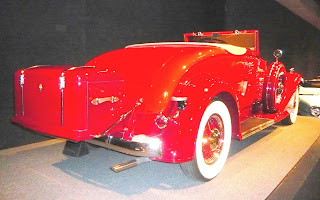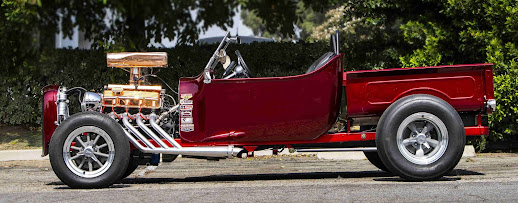Monday, December 21, 2020
Packard "Ask the man who owns one”
Friday, December 18, 2020
Donations to Northern California Auto Racing now can be made online
The author is a proud supporter of Northern California Auto Racing Inc. (NCAR) a non-profit charitable 501(c)3 Corporation that has the goal of creating a museum and Hall of Fame to honor Northern California auto racers.
Recently, the Giving Edge website accepted NCAR, so donors can make their pledge of support online at https://www.bigdayofgiving.org/ncar825
Thursday, December 17, 2020
Carbon Fiber Shock Guards
Carbon Fiber Shock Guards
Photo courtesy of EPARTTRADE
Ebbco Offroad run by 2001 USAC Western States midget champion Danny Ebberts introduced its line of Carbon Fiber Shock Guards, from are designed to protect your shock shafts and prevent dirt and mud from getting into coil springs which will change the spring rate.
These guards are made from high
quality carbon fiber, vacuum bagged for strength and weight. Cleanly bolts to
supplied mounting ring with hardware. EBBCO also offers carbon fiber wheel
covers.
Check out EBBCO’s website at https://ebbcooffroad.com/
Monday, December 14, 2020
Hood Ornaments
Friday, December 11, 2020
Copper trimmed 1924 T-Bucket
CFR limited edition copper series 1924 T-bucket
CFR Performance in Ontario, California built this 1924
T-bucket several years ago and it has appeared in the CFR booth at the SEMA (Specialty Equipment Market Association) show multiple times, the last time in 2016 to introduce
CFR’s new LS motor accessory parts line.
This year, the car was updated once again for the SEMA360 'Battle of the Builders' to introduce the company’s new CFR limited edition copper series
of LS engine accessories which includes the valve covers, valley plate and intake scoop.
Check out the full line of CFR copper dress-up accessories at https://www.cfrperformance.com/category_s/49859.htm
Friday, December 4, 2020
Thriller custom from SEMA360
Thriller Custom
The 1970 Plymouth Sport Satellite nicknamed “Thriller” was
built by Randy Weaver of Weaver Customs in West Jordan, Utah and appeared in
the SEMA360 virtual Battle of the Builders showcase.
The top of the 900-horsepower supercharged SRT Hellcat Gen
III Hemi V-8 peeks through the hood. All
that horsepower passes through a T-56 manual six-speed transmission and to the
rear wheels through a narrowed Ford 9-inch rear end.
The car rides on a Scotts Hotrods independent front
suspension and a triangulated four-link rear suspension with a Watt’s link. Wilwood disc brakes provide the stopping power
tucked inside a set of EVOD Industries three-piece wheels wrapped in Mickey Thompson
rubber.
JS Custom Interiors in Salt Lake City handled the interior
work with Hyde’s leather offset with billet accessories. The
dash is filled with Dakota Digital VHX-1023 instruments and a digital touch
screen to run the Kicker audio system. The custom center console houses a
Dakota Digital DCC-series controller for the Vintage Air climate package, and
custom made billet shifter reminiscent of the Pistol Grip shifter made famous in
the nineteen seventies Chrysler Corporation muscle cars.
All photos courtesy of SEMA





















